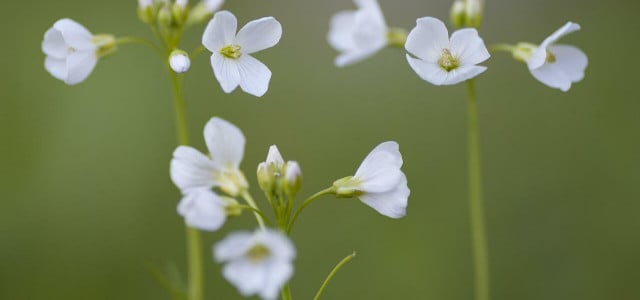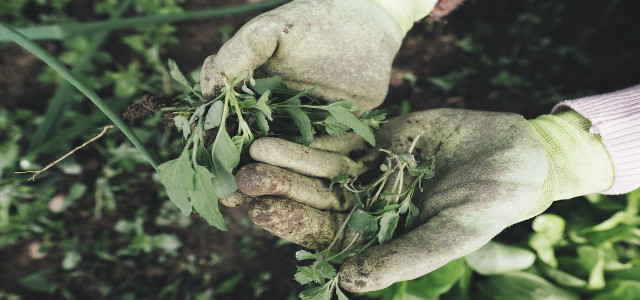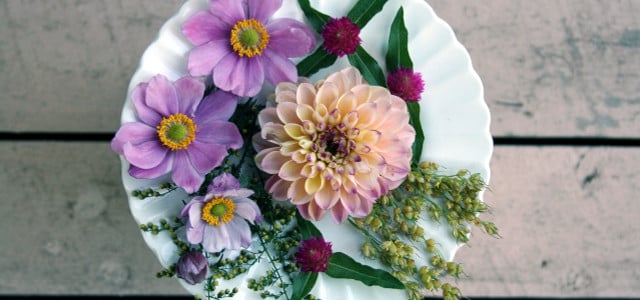Sweet woodruff is a low maintenance aromatic and medicinal herb that is often overlooked. Learn how to cultivate it yourself, and ways to enjoy this edible plant.
Sweet woodruff (Galium odoratum) is a perennial herb that makes an ideal plant for ground cover in shadier areas. It is characterized by its whorl-shaped leaf clusters and dainty white flowers. Also commonly known as waldmeister, it’s an incredibly popular plant in Central Europe for its unique flavor profile, which can be described as an herby vanilla.
Though the use of sweet woodruff for medicinal purposes has seemingly gone out of style, there are still people who use it to help treat cramps and menopause problems, kidney and liver disorders, and as a laxative. Research suggests that it may contain anti-inflammatory properties, however, the use of sweet woodruff in a medicinal capacity has not been thoroughly studied.
This edible herb is an easy to care for plant that can help attract pollinators like bumblebees to your yard. Sweet woodruff is also an important forage plant for caterpillars and moths. An added bonus is that it’s also non-toxic, so you can let your pets out into the yard without hesitation. Let’s take a look at how to grow sweet woodruff in your own yard.
How to Grow Sweet Woodruff
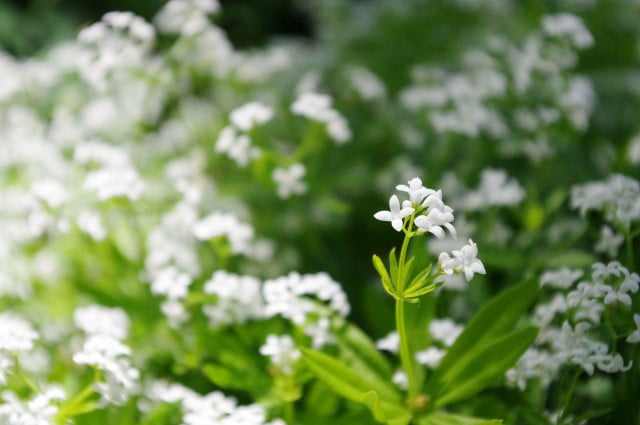


- Zones: 4 to 8
- Height: 8-12 inches
- Spread: 6-24 inches
- Plant Time: Early spring (after the last frost) or late fall (before the first frost)
- Bloom Time: April – June
- Exposure: Partial to Full Shade
Woodruff is very much a forest plant, as it loves the shadier areas with moist, well-draining, lime- and humus-rich soil. You can easily create humus-rich soil by mixing composted leaves or grass clippings to your garden.
It’s worth noting that waldmeister is an invasive plant – it spreads via runners, and will choke out weaker plants. Therefore, it’s important to choose an area that you don’t mind having covered with this aromatic herb, or control the plant’s growth via spade edging,
Although you can grow sweet woodruff from seed, propagating an existing plant is a far easier method, so it’s a good idea to ask around to find out if any of your friends or neighbors already have this growing in their yard. To propagate, simply dig up mature sections (at least 2 years old) that still have their roots attached, and replant them in a new area – ideally in early spring or late fall.
Once your sweet woodruff plant is established, it won’t require additional fertilizer or water, unless it experiences drought-like conditions. This makes it an ideal garden plant for beginners, as it’s very easy to maintain.
Waldmeister Syrup Recipe
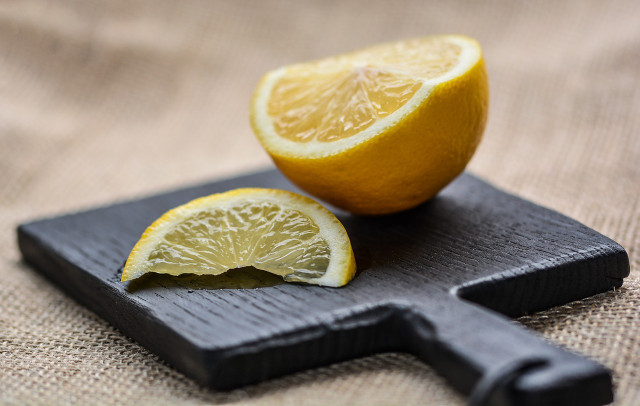


Waldmeister syrup is a very popular ingredient in Germany and Central Europe and is used to flavor everything from beer and wine to chewing gum and candy. It’s often characterized by its bright green color, not too dissimilar to the color often associated with green apple.
Ingredients:
- 2 oz. fresh sweet woodruff
- 1 lb organic cane sugar
- 1 quart water
- 1 organic lemon, sliced
- Optional: green natural food coloring
Instructions:
- Wash the sweet woodruff, remove the leaves, and lay them out on a dishtowel to dry overnight. Alternatively, you can spin them in a salad spinner if you have one, before laying them out to dry overnight.
- Add water and sugar to a saucepan and bring to a boil, stirring until the sugar has completely dissolved.
- Remove from heat, add sweet woodruff leaves and lemon slices, then cover and leave overnight.
- Using a cheesecloth, or cheesecloth alternative, strain the liquid into a large saucepan. If you’d like to add food coloring, add a few drops to the mixture.
- Bring the mixture to a boil, and allow it to simmer for approximately 10 minutes.
- Pour into a sterilized jar or bottle for storage.
Using Sweet Woodruff Syrup



Once the waldmeister syrup is cooled, you can start to use it in a variety of ways, including:
- on top of vegan nice cream
- Waldmeister lemonade
- as a soak between cake layers
- kombucha cocktails
- with sparkling water as a healthy alternative to soda
Read more:
- Chickweed: How to Use this Edible Wild Herb
- Bee Balm Flowers: How to Plant, Care For, and Use Bee Balm
- Soapwort: How to Grow and Care for this Flowering Beauty
Do you like this post?






